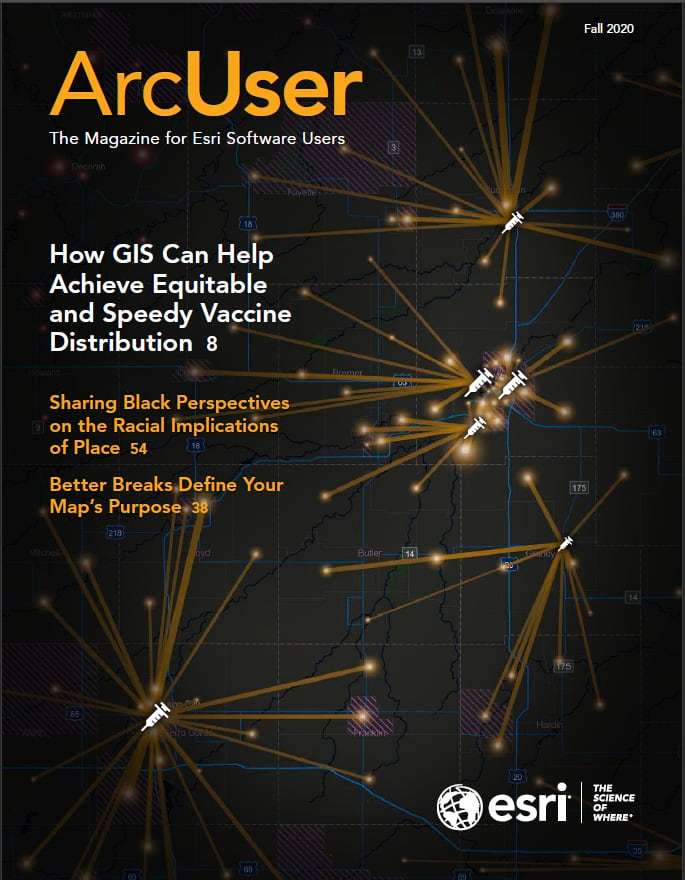GIS for Science, Volume 2: Applying Mapping and Spatial Analytics
By Dawn J. Wright and Christian Harder
GIS for Science, Volume 2: Applying Mapping and Spatial Analytics, is the second collection of articles about science and the scientists who use GIS and spatial data science. It follows the same format as Volume 1, which was published in 2019. These articles, contributed by researchers working for government agencies, academic institutions, and Esri, are organized into four sections: how the Earth works, how the Earth looks, how we look at the Earth, and a final section on outstanding applications.
The final section showcases examples of GIS applications for COVID-19 pandemic response, mapping the harmful algal bloom, implementing a map projection that more effectively maps the ocean, modeling the Ebola outbreak in Sierra Leone, and many other examples that demonstrate the value of GIS in the application of science to the world’s challenges.
The book was coedited by Esri chief scientist Dawn Wright and Esri technology writer and information designer Christian Harder. It contains a foreword by Jared Diamond, a Pulitzer Prize winner for general nonfiction.
Its audience is made up of professional scientists, citizen scientists, and individuals who are interested in science and geography. To learn more, visit gisforscience.com. This site contains a collection of digital resources related to each chapter including additional maps, videos, web apps, and ArcGIS StoryMaps stories. Esri Press; 205 pp., print edition ISBN: 9781589485877; e-book ISBN: 9781589485884.
Smarter Government Workbook: A 14-Week Implementation Guide to Governing for Results
By Martin O’Malley
This workbook is a companion to Smarter Government: How to Govern for Results in the Information Age, the 2019 book by former Maryland governor Martin O’Malley. He provides a practical, interactive 14-week plan that governments can follow to implement a performance measurement and management system modeled on the CitiStat and StateStat systems he developed as mayor of Baltimore and then governor of Maryland. The StateStat system was modeled after CompStat, a crime management system that New York City launched in the early 1990s. When O’Malley was elected governor in 2007, he implemented the Stat system in state agencies. The workbook walks readers through how to create a framework that will help government leaders:
- Set up a system for gathering and sharing accurate and timely information.
- Deploy resources quickly.
- Build leadership and collaboration.
- Develop and refine effective strategic goals and key performance indicators.
- Assess results.
Esri Press; 2020 80 pp., print edition ISBN: 9781589486027.

